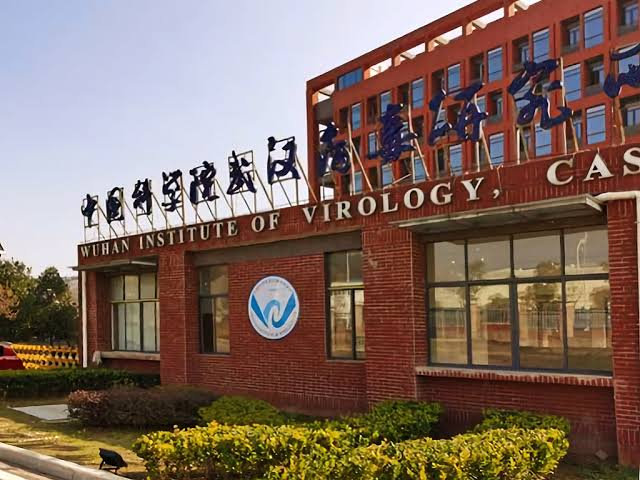US experts sent an alert to Washington that Wuhan lab was ready but the lab’s own scientists reported ‘a serious shortage of appropriately trained technicians and investigators needed to safely operate this high-containment laboratory’.
Bengaluru: Wuhan Institute of Virology (WIV) is finally being held accountable for conducting risky gain of function research on coronaviruses. These viruses were collected from bats in caves in Yunnan province, 1,500 kilometres from Wuhan. The lab is also getting pinpointed for lax safety standards and for being under the direct control of the Chinese military, the People’s Liberation Army (PLA). The cover-up that was put into operation since January 2020 with the help of experts in Europe and the United States with links to the institute is coming apart at last by the weight of scientific evidence.

On 25 May 2020, Chinese Center for Disease Control and Prevention (CDC) officially declared on Chinese state media that the seafood market in Wuhan may have been a victim of the virus and was not the site of cross species transmission of SARS CoV2 to humans as they first thought. Yet this false theory of the wet market was kept alive by interested researchers in the US and Europe, often at very high levels. Some of them remain prominent in the Joe Biden administration. Their effort was to quell scientific enquiry into the possibility of a leak from WIV. The attempt at whitewash, which has continued into sections of the Biden administration, occurred despite knowledge of WIV and its functioning. Hence, there is the need to examine the facts about the institute that was and is at the heart of the research into the deadly pathogen that has had the effect of a weapon of mass destruction on the world.
On their website, WIV has stated the following: That their scientists have made great achievements in virology and biotechnology by addressing national strategic demands and cutting-edge scientific questions. Pathogenic study of emerging infectious diseases is a major research field. And that great achievements have been made in animal origin studies of Severe Acute Respiratory Syndrome coronavirus (SARS-CoV) and avian influenza viruses.
The WIV website also lists international partnership with EcoHealth Alliance of USA; INSERM and Lyon P4 Laboratory of France; Biological Research Center, Defense Science and Technology Organization, Pakistan; International Centre for Chemical and Biological Sciences, University of Karachi, etc.

Prominent on the list of more than 100 researchers of the WIV is Ashaq Ali, a researcher from University of Lahore, who is investigating “emerging viruses and other highly infectious pathogens”, as mentioned by him on a research website. WIH has also had close ties with the Galveston National Laboratory in the United States, the Centre International de Recherche en Infectiologie in France, and the National Microbiology Laboratory in Canada.
The construction of WIV’s National Biosafety Laboratory was completed in collaboration with the French government’s CIRI lab at the end of 2014 with Biosafety level (BSL) 2 and 3 labs. The necessity for a BSL-4 lab arose to investigate highly dangerous pathogens. The BSL-4 level lab became functional only in January 2018. In 2017, at a conference in Beijing, a presentation was made about new coronaviruses with unique “spike protein”. Alarmed by this, the US embassy sent three teams of experts in late 2017 and early 2018 to meet with the WIV scientists led by Shi Zhengli, the “bat woman”. They sent an alert to Washington that the BSL-4 lab was now ready and the lab’s own scientists reported “a serious shortage of appropriately trained technicians and investigators needed to safely operate this high-containment laboratory”.

An article in journal Nature in November 2015 titled “A SARS-like cluster of circulating bat coronaviruses shows potential for human emergence” was jointly authored by 15 researchers including Ralph S. Basic’s team at University of North Carolina; Xing-Yi Ge and Zhengli-Li Shi from Key Laboratory of “Special Pathogens and Biosafety, WIV”; and labs in Boston and Zurich. They showed that a lab-generated chimeric virus caused severe disease in the lungs of humanized mice and that such mice cannot be protected with then existing therapeutic neutralizing antibodies developed against SARS-CoV. The authors also noted that “On the basis of these findings, scientific review panels may deem similar studies building chimeric viruses based on circulating strains too risky to pursue, as increased pathogenicity in mammalian models cannot be excluded. Together, these data and restrictions represent a crossroads of GOF research concerns; the potential to prepare for and mitigate future outbreaks must be weighed against the risk of creating more dangerous pathogens.” They acknowledged grants from the US National Institutes of Health (NIH) and that the “Human airway epithelial cultures” were supported by the National Institute of Diabetes and Digestive and Kidney Disease of the NIH. Another article on SARS coronavirus published on 30 November 2017 in the journal PLOS Pathogens by Ben Hu and associates from WIV acknowledged funding from multiple sources including USAID Emerging Pandemic Threats (EPT) and the Strategic Priority Research Program of the Chinese Academy of Sciences.
From these self-declarations by WIV on its English website and by its researchers in a few of their English language publications, it is obvious that gain of function research on emerging pandemic threats i.e., corona and influenza viruses was done using humanized mice and human airway epithelial cultures, and deadly chimeric viruses were produced even before the BSL4 facility was set up. They have also acknowledged their collaborators and those who were funding them. Investigation into the US intelligence report that many of WIV researchers became sick in autumn 2019 with symptoms consistent with Covid-19 should reveal the truth about the outbreak. Satyameva Jayate in our national emblem from Mundaka Upanishad, means “truth alone triumphs”.
Dr P.S.Venkatesh Rao is Consultant Endocrine, Breast & Laparoscopic Surgeon; National Delegate (India) to International Society of Surgery; President 2014-15, Indian Association of Endocrine Surgeons; former Professor of Endocrine Surgery; former Faculty CMC (Vellore), AIIMS (New Delhi), UCMS (Delhi), MSRMC (Bengaluru).

